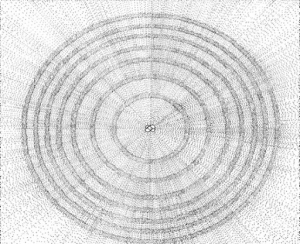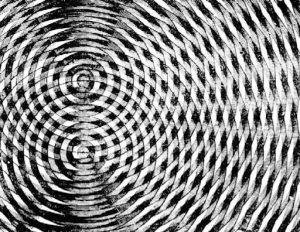2. Consciousness and The Deep Complexity Paradigm
We began with the question of consciousness in transformational education before moving to consideration of the relationship between consciousness and sentience. We then explored the effectiveness of a Complexity Patterning approach to teaching and learning for tuning students into the broader patterning of our shared environment. We considered whether such a deep complexity focused approach might contribute to the purposeful shaping of the expressions of consciousness in educational settings toward a relational experience of being. An underlying provocation that wove throughout the Daologues was the possibility of education that purposefully contributes to human evolution toward increasing holotropic coherence – syntony – with each other and all other species through coherence with life’s generative patterning.
Consciousness
Alexander: I think about consciousness as multiple in expression. I tend to think of it the way Einstein thought of relativity, postulating Special relativity and General relativity. Similarly, we have consciousness that we talk about as strictly human consciousness; that is the Special Case. Inquiry in this case involves asking such things as, can people be tuned to each other’s consciousness? What happens when you sit in a Faraday cage? And in these instances, we are essentially considering what constitutes the human experience of consciousness. Asking these sorts of questions about consciousness focuses on a very special condition of consciousness – the human condition.
Then there is consciousness writ large. Trees express consciousness, a stand of trees expresses consciousness, the stone expresses consciousness, the atom might even do so on a particular level. Indeed, the universe as a whole expresses consciousness, and these instances comprise the General Case of consciousness as compared to the Special Case expressed through human beings. And not ‘special’ like we are privileged, I don’t mean it that way; it is like General and Special Relativity. So, when we talk about it as a special case we can talk about the diversity of human consciousness, and even there you have a whole variety of ways of making sense, making meaning. The whole idea of making is such a weird word because are we making it or is it making us? I think I am actually leaning more toward the latter, but then – there is the dance! Because especially when we understand the patterning, we can help foment that process — we can be participants in it. This is the shift from merely understanding evolution and even understanding the evolution of consciousness, to making evolution conscious. That’s quite a different framing!

Dynamic Spheres of Emergence. S. L. Brown (2021)
Shae. Yes, tuning our consciousness to the dance of co-creation; it is purposeful participation in life’s coming-into-being, and I believe fundamental to a coherent life. I believe that being purposeful with this capacity is the way that human evolution can unfold, and pattern perception and cognition is an inherent pathway for this. It is not a new capacity; Indigenous peoples have lived this relational way of being for a long time. Maybe evolution is also non-linear, and we are spiraling; evolving around again — but not with the same coordinates — to incorporate such relational consciousness in today’s context.
The Deep Complexity Paradigm
Shae. The creative relationality of consciousness and all of life is fundamental to the deep complexity paradigm. It includes people in all complex phenomena. In quantum field physics various theorists such as Karen Barad, and Stephen Hawking, as described in a book by Hertog, describe humans and all of our thinking as well as acting as inseparably co-creative in the world’s perpetual coming-into-being. We are inside looking up and out, not outside looking in! First Nations man Basil Brave Heart is quoted in an interview in 2018 as saying that the centre is everywhere, while the edges are nowhere (Reger, 2018).
The Complexity Patterning design and educational strategy is about the patterns of these relational dynamics between people and with the entire more-than-human world. It is a way to perceive, think about, and consciously know our relationship with the complexity all around us. This includes time as a complex phenomenon. And perhaps by understanding relational dynamics through pattern thinking we might be able to think about our participation in the emergence of life in a more purposeful way. To increase the relational integration of consciousness toward making evolution increasingly purposeful. Pattern thinking is an approach to consciously curated emergence.
- Barad, K. (2007). Meeting the universe halfway: Quantum physics and the entanglement of matter and meaning. Duke University Press.
- Barad, K. (2022). Agential realism – A relational ontology interpretation of quantum physics. In 0. Freire (Ed), The Oxford handbook of the history of quantum interpretations. Oxford University Press.
- Brown, S. L. (2023). Complexity Patterning: A patterns-based design and strategy for transformational Education. ISSS Yearbook. Systems Research and Behavioural Science
- Hertog, T. (2023). On the origin of time: Stephen Hawking’s last theory. Bantum.
- Reger, D. (2018, June 1). Basil Brave Heart speaks about his spiritual journey. In Moccasin Tracks [Podcast]. WRUV FM, University of Vermont Student and Community Radio. https://www.podomatic.com/podcasts/wpcrmoccasintracks/episodes/2018-05- 31T08_31_31-07_00

